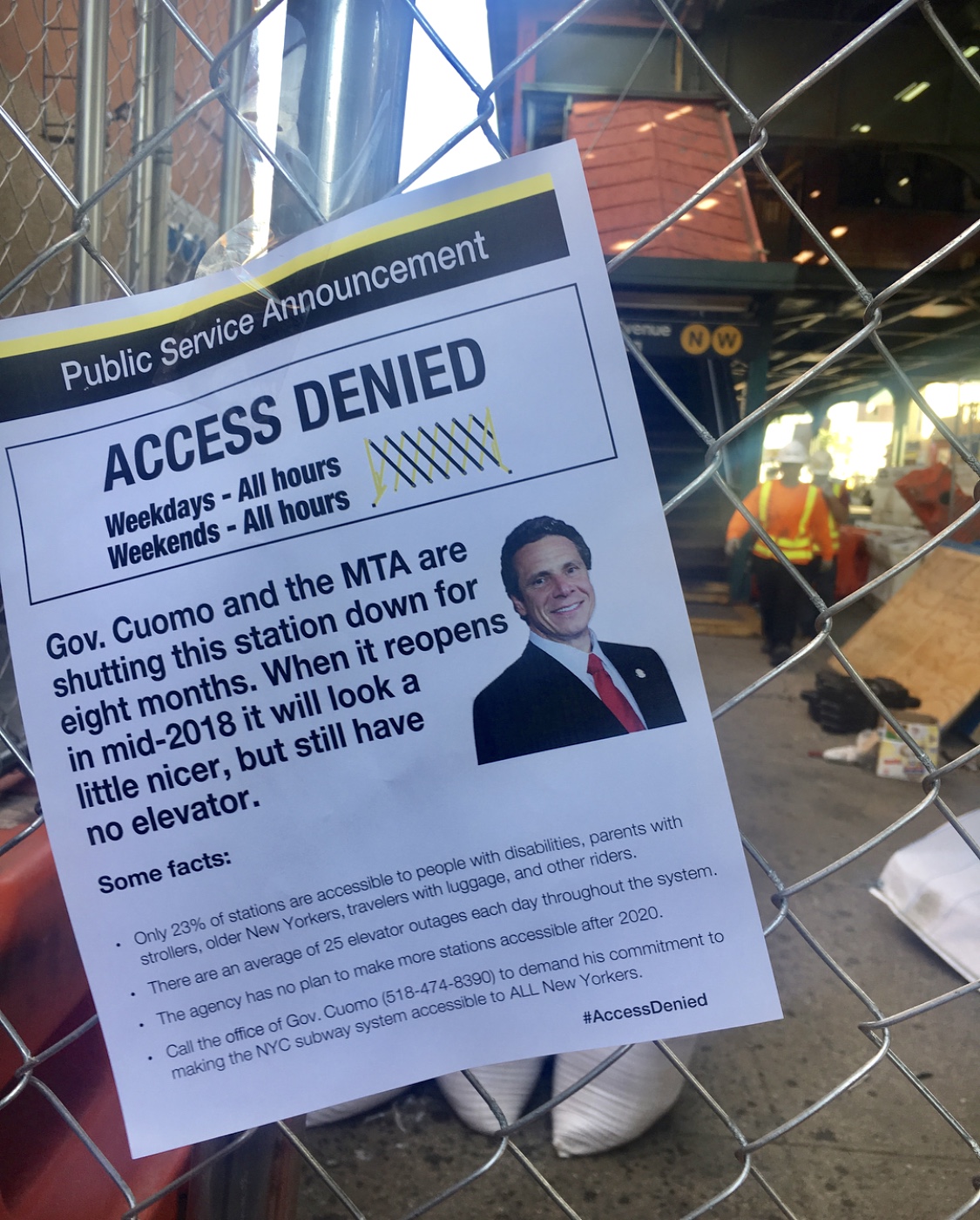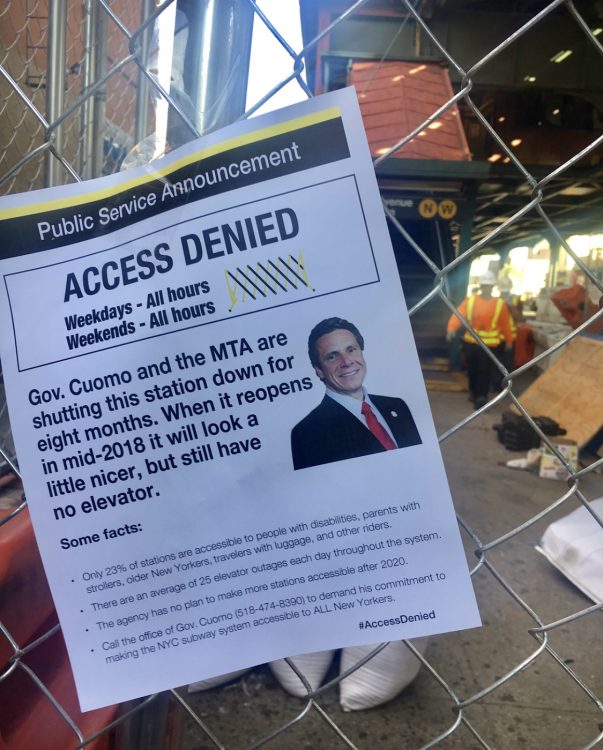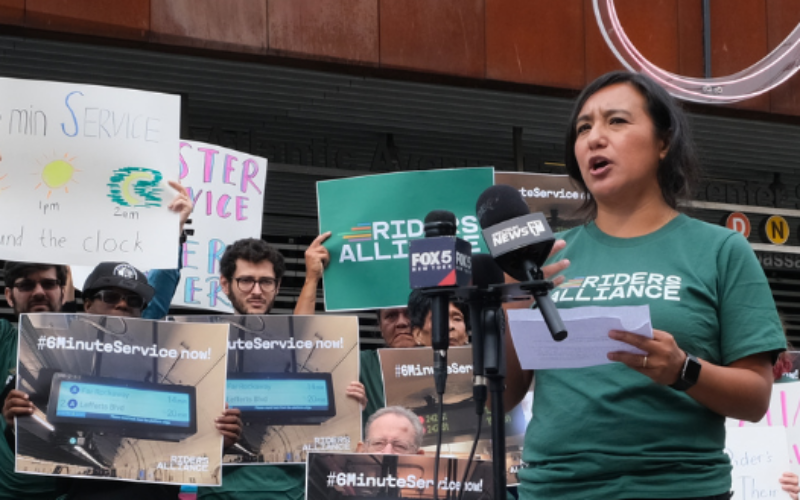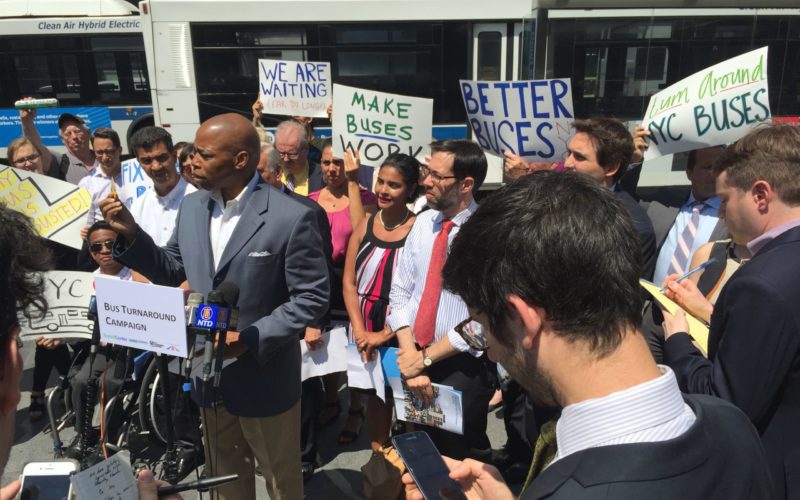
News broke this week that the Metropolitan Transportation Authority’s Enhanced Station Initiative (ESI) will be limited to 19 subway stations. The ESI was Governor Andrew Cuomo’s directive to spend nearly $1 billion to upgrade 32 stations on cosmetic repairs. The program was heavily criticized by TransitCenter’s Access Denied campaign, riders and members of the MTA’s board for failing to make stations ADA accessible while they were being closed for months at a time.
Unfortunately, the program didn’t end because the agency suddenly saw it as misguided. Rather, it fell victim to the high construction costs. The MTA was ultimately able to fund only 19 of 32 planned stations, blaming discovered “infrastructure rot” as the source of cost overruns. MTA Chair Joe Lhota admitted to the Wall Street Journal he knew in 2017 the program costs were ballooning, but didn’t bring it up during discussions of the program because he “didn’t think it was relevant to the debate.”
A small silver lining and a sign that the MTA recognizes how untenable the ESI program is that $90 million left in the program will be allocated to making one or two additional subway stations accessible.
Much more importantly, the impending demise of the program allows the MTA to pivot to a station program that makes accessibility central to any major station overhaul, for the upcoming 2020-2024 capital program and thereafter.
To make real strides in the future, the MTA must create a policy and clear plan to bring elevators to the entire system. The agency lacks both. New York City Transit President Andy Byford has indicated he’s working on them. The proof will be whether the 2020-2024 capital program reflects a faster, bolder approach to accessibility. Riders don’t need another list of “key stations” to be completed in a hundred years. They need tangible improvements delivered on a regular basis.
Most immediately, the MTA must dramatically improve its elevator performance. Given that the subway system has so few elevators, the ones that do exist have to be much more reliable. The MTA’s target reliability of 96.5% uptime means that the average subway station elevator will be out of service for two weeks each year. This is too low of a bar––Boston’s and Chicago’s elevators routinely operate at 99% reliability. Broken elevators result from the agency’s practice of hiring too few elevator maintenance staff and its failure to perform preventive maintenance on aging equipment. This is within Byford’s control now, in 2018.

 Built to Win: Riders Alliance Campaign Secures Funding for More Frequent Subway Service
Built to Win: Riders Alliance Campaign Secures Funding for More Frequent Subway Service
Thanks to Riders' Alliance successful #6MinuteService campaign, New York City subway riders will enjoy more frequent service on nights and weekends, starting this summer. In this post, we chronicle the group's winning strategies and tactics.
Read More A Bus Agenda for New York City Mayor Eric Adams
A Bus Agenda for New York City Mayor Eric Adams
To create the “state-of-the-art bus transit system” of his campaign platform, Mayor Adams will have to both expand the quantity and improve the quality of bus lanes. We recommend these strategies to get it done.
Read More